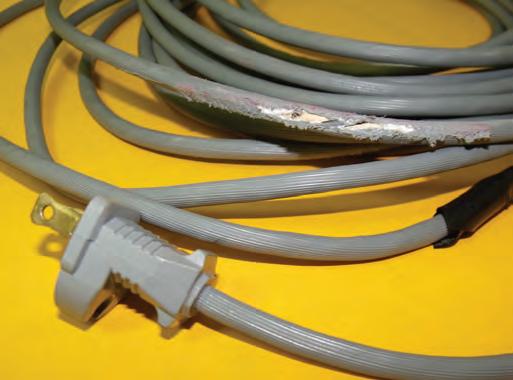
2 minute read
Tackling Outdoor Projects Safely
Afreshlymowed lawn, colorful flowers, and a stone path can give your yard some serious curb appeal. Before making improvements to your yard by planting flowers, trimming bushes, or installing a new water feature, make sure you are doing so safely.
“Before tackling any project, take a few minutes to prepare for the job,” says Mike Ashenfelter, advisory board member of the Energy Education Council’s Safe Electricity program. “Begin by making sure you’ve got the right tools for the job. Also check cords for any cracks or frayed insulation and proper connections. Then take note of potential hazards in the work area such as overhead power lines, especially those connected to the home.”
Even professional contracted workers are not immune to electrical accidents, and it is important to keep safety in mind. Preparing for the job is important part of tackling an outdoor project safely. Pay attention to your electric tools and extension cords. Check the condition of cords before each use. Look for fraying or cracking along the entire length of the cord and for damage to the plug or sockets. Replace any damaged extension cords or tools. Be sure to only use extension cords rated for outdoor use, and remember to unplug them when not in use. Extension cords are designed for temporary use only.
When purchasing an extension cord or power tool, only buy products that have been certified by a recognized safety laboratory, such as Underwriters Laboratory, ETL, or CSA.

Remember that electricity and water are a dangerous mix. If it is raining or the ground is wet, do not use electric power or yard tools. Never touch circuit breakers or fuses when you are wet or standing in water.
To help prevent electric shock, make sure outdoor outlets are equipped with ground fault circuit interrupters (GFCIs). If your outdoor outlets do not have them, use a portable GFCI or have a professional install GFCI outlets.
Keep electric equipment at least 10 feet from wet areas, and always store power tools and extension cords in dry areas. Replace any that get damaged by water.
If you have overhead service, be especially careful when working near power lines attached to your house. Keep equipment and yourself at least 10 feet away from lines. Never trim trees near power lines — leave that to the professionals.
If you are planting a tree in your yard, consider the placement. Select a planting location that will not interfere with utility lines both in the air and underground. Tree branches can interfere with overhead power lines, and roots can do the same with underground utilities.
When taking on a project that requires any sort of digging, such as planting flowers or building fence, be sure to call 811 before you dig. When you call, a professional will come to your home to mark underground public utilities so you know where it is safe to dig. Hitting an underground line can cause serious injury, disrupt service to you and your neighbors, and can be expensive to repair.










